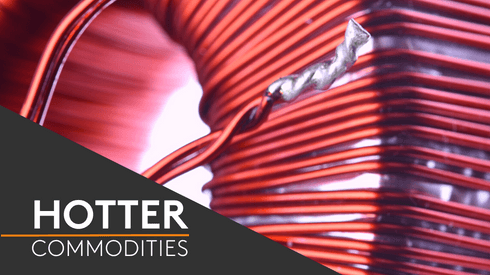Aluminium: Comfortable consolidation
Aluminium appears comfortable consolidating for the moment, and this will leave prices in a stronger position to challenge overhanging long-term trend-line resistance from the May 2018 high, which stands at $1,670 per tonne currently.
Copper: Consolidation unlikely to last
Copper reached its highest price since July 2018 at the start of last week before coming under pressure due to a violent sell-off in Chinese equities. The fact that copper has proven more resilient than most of its LME base metals peers and the Chinese equity market suggests some positive fundamental dynamics at play. We think that the consolidation in copper prices will prove transient as the market is likely to stay in a “buy the dips” mentality thanks to a positive swing in fundamental expectations.
Lead: Likely to continue working higher
The rally in lead prices has halted for now after running out of steam last week at $1,886 per tonne – an 18.5% rise from the mid-May low, but 20.1% off the March trough. In market terms, that means lead has entered into bull market territory. Supported by macro and fundamental forces too, we have raised our price forecasts.
Nickel: Reviewing the latest INSG estimates
Nickel prices are undergoing some much-needed technical consolidation, and the orderly nature of the pullback so far remains quite constructive. We envisage LME nickel will test key support levels within its established up-channel before resuming higher.
In this week’s nickel analysis we present some key takeaways from our first pass over the latest International Nickel Study Group (INSG) data. It helps us to better quantify 1.) the Chinese nickel market’s recovery from the Covid-19 disruptions there in the first quarter; and 2.) the effect of lockdowns on the market fundamentals in the world ex-China in the second quarter.
Tin: Excess supply in the Chinese market
The excess supply in the Chinese physical tin market has prevented tin prices from appreciating meaningfully, especially given the recent sell-off in Chinese equities. That said, we expect tin prices to remain in an uptrend in the third quarter as the looseness in the Chinese market could dissipate due to Yunnan Tin being on maintenance. Also, we expect liquidity conditions to remain easy and supportive of tin prices. We are more cautious for the fourth quarter.
Zinc: Fundamental revisions
We have made some modest revisions to our supply-demand projections for the second half of 2020 to better account for the impact of large-scale fiscal spending, as well as increasing mine disruptions. We have lowered our projections for oversupply in the refined market to around 300,000 tonnes in 2020 as a result, which is more price-supportive than the approximate 400,000-tonne surplus we were modelling previously.





